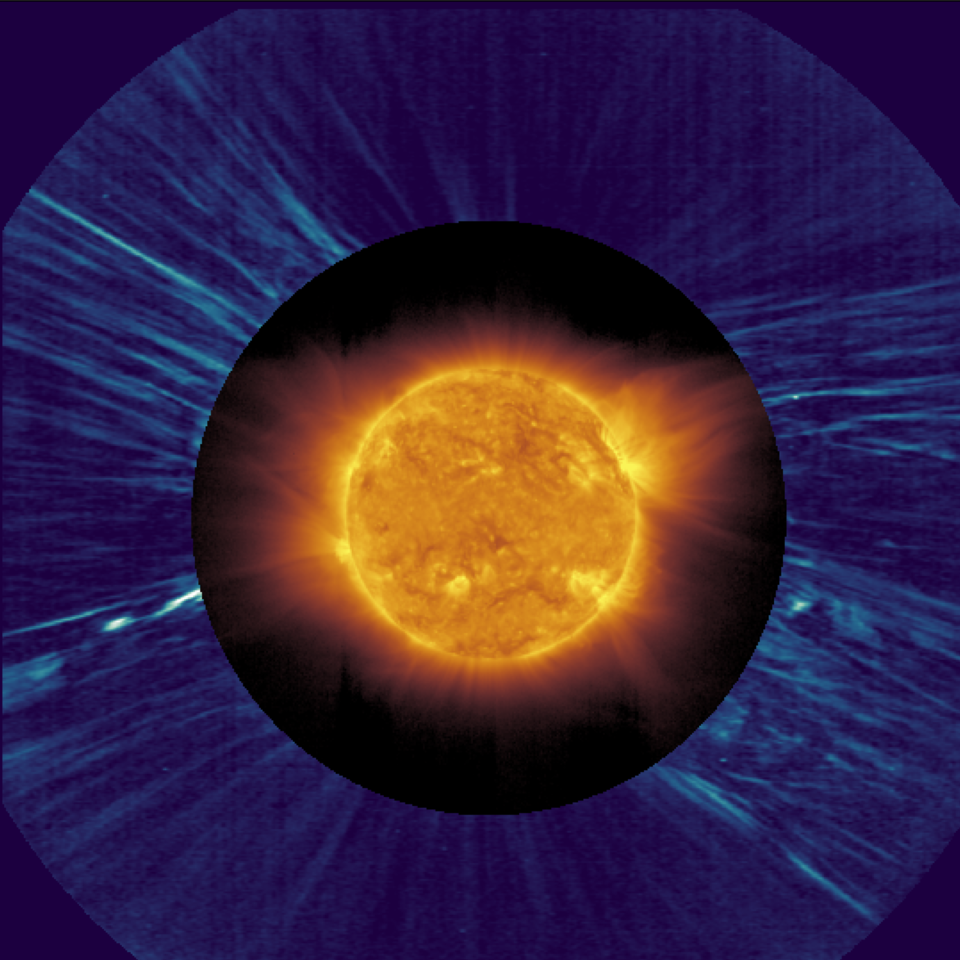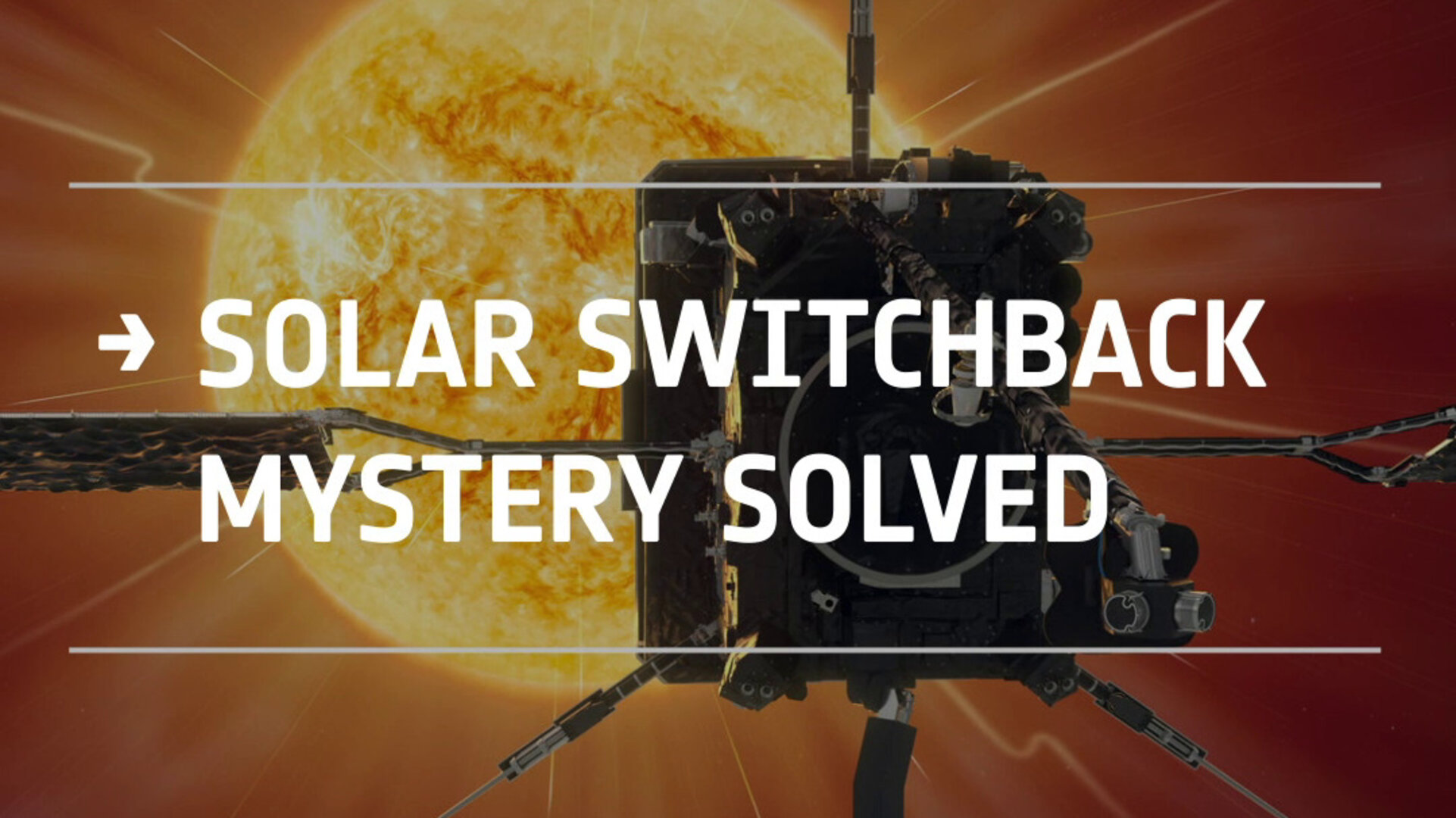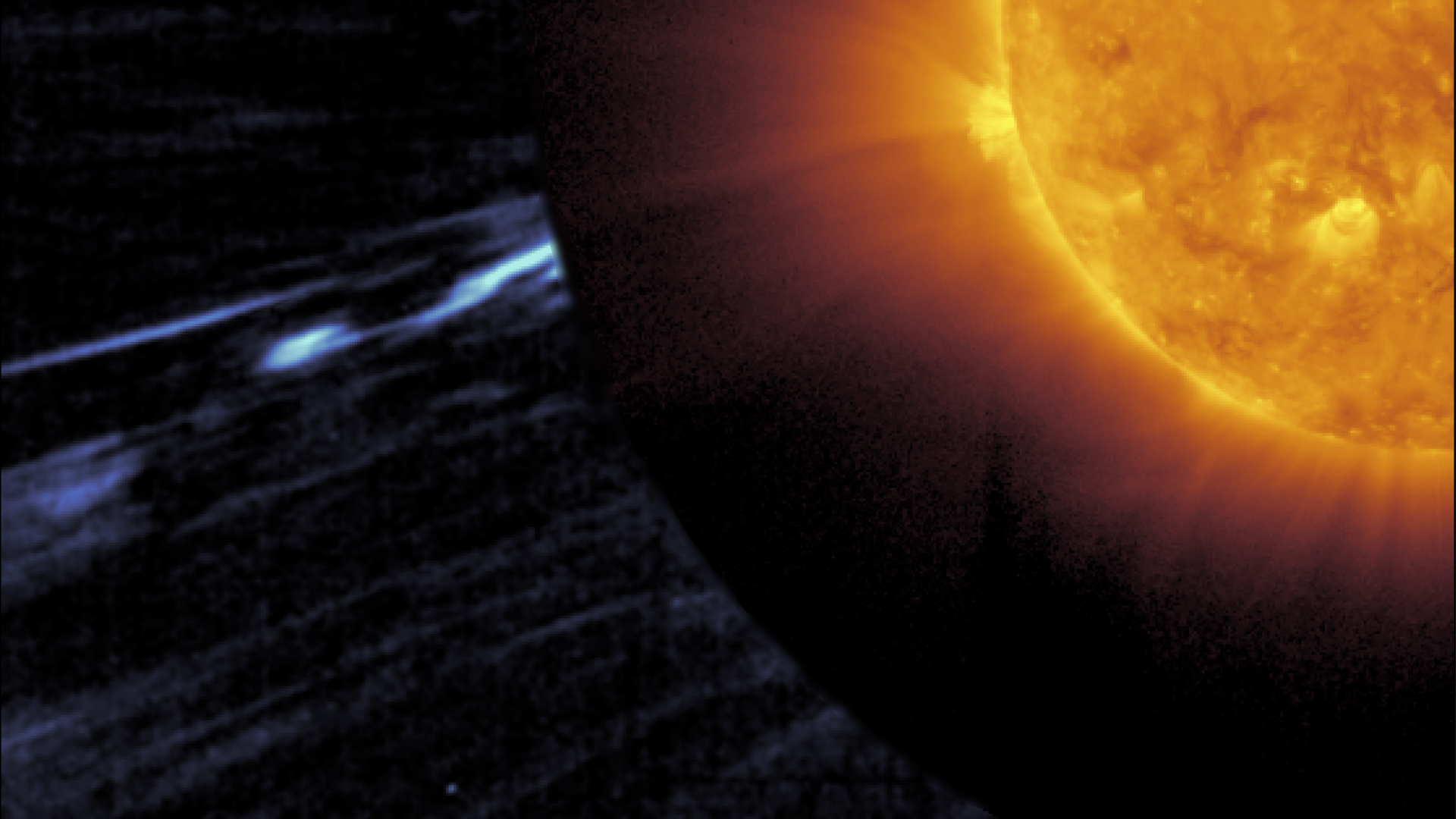Solar Orbiter solves magnetic switchback mystery
With data from its closest pass of the Sun yet, the ESA/NASA Solar Orbiter spacecraft has found compelling clues as to the origin of magnetic switchbacks, and points towards how their physical formation mechanism might help accelerate the solar wind.
Solar Orbiter has made the first ever remote sensing observation consistent with a magnetic phenomenon called a solar switchback – sudden and large deflections of the solar wind’s magnetic field. The new observation provides a full view of the structure, in this case confirming it has an S-shaped character, as predicted. Furthermore, the global perspective provided by the Solar Orbiter data indicates that these rapidly changing magnetic fields can have their origin near the surface of the Sun.


Access the video
While a number of spacecraft have flown through these puzzling regions before, in situ data only allow for a measurement at a single point and time. Consequently, the structure and shape of the switchback has to be inferred from plasma and magnetic field properties measured at one point.
When the German-US Helios 1 and 2 spacecraft flew close to the Sun in the mid 1970s, both probes recorded sudden reversals of the Sun’s magnetic field. These mysterious reversals were always abrupt and always temporary, lasting from a few seconds to a number of hours before the magnetic field switched back to its original direction.
These magnetic structures were also probed at much larger distances from the Sun by the Ulysses spacecraft in the late 1990s. Instead of a third the Earth’s orbital radius from the Sun, where the Helios missions made their closest pass, Ulysses operated mostly beyond the Earth’s orbit.

Their number rose dramatically with the arrival of NASA’s Parker Solar Probe in 2018. This clearly indicated that the sudden magnetic field reversals are more numerous close to the Sun, and led to the suggestion that they were caused by S-shaped kinks in the magnetic field. This puzzling behaviour earned the phenomenon the name of switchbacks. A number of ideas were proposed as to how these might form.
On 25 March 2022, Solar Orbiter was just a day away from a close pass of the Sun – bringing it within the orbit of planet Mercury – and its Metis instrument was taking data. Metis blocks out the bright glare of light from the Sun’s surface and takes pictures of the Sun’s outer atmosphere, known as the corona. The particles in the corona are electrically charged and follow the Sun’s magnetic field lines out into space. The electrically charged particles themselves are called a plasma.

At around 20:39 UT, Metis recorded an image of the solar corona that showed a distorted S-shaped kink in the coronal plasma. To Daniele Telloni, National Institute for Astrophysics - Astrophysical Observatory of Torino, Italy, it looked suspiciously like a solar switchback.
Comparing the Metis image, which had been taken in visible light, with a concurrent image taken by Solar Orbiter’s Extreme Ultraviolet Imager (EUI) instrument, he saw that the candidate switchback was taking place above an active region catalogued as AR 12972. Active regions are associated with sunspots and magnetic activity. Further analysis of the Metis data showed that the speed of the plasma above this region was very slow, as would be expected from an active region that has yet to release its stored energy.
Daniele instantly thought this resembled a generating mechanism for the switchbacks proposed by Prof. Gary Zank, University of Alabama in Huntsville, USA. The theory looked at the way different magnetic regions near the surface of the Sun interact with each other.

Close to the Sun, and especially above active regions, there are open and closed magnetic field lines. The closed lines are loops of magnetism that arch up into the solar atmosphere before curving round and disappearing back into the Sun. Very little plasma can escape into space above these field lines and so the speed of the solar wind tends to be slow here. Open field lines are the reverse, they emanate from the Sun and connect with the interplanetary magnetic field of the Solar System. They are magnetic highways along which the plasma can flow freely, and give rise to the fast solar wind.
Daniele and Gary proved that switchbacks occur when there is an interaction between a region of open field lines and a region of closed field lines. As the field lines crowd together, they can reconnect into more stable configurations. Rather like cracking a whip, this releases energy and sets an S-shaped disturbance traveling off into space, which a passing spacecraft would record as a switchback.
According to Gary Zank, who proposed one of the theories for the origin of switchbacks, “The first image from Metis that Daniele showed suggested to me almost immediately the cartoons that we had drawn in developing the mathematical model for a switchback. Of course, the first image was just a snapshot and we had to temper our enthusiasm until we had used the excellent Metis coverage to extract temporal information and do a more detailed spectral analysis of the images themselves. The results proved to be absolutely spectacular!”
Together with a team of other researchers, they built a computer model of the behavior, and found that their results bore a striking resemblance to the Metis image, especially after they included calculations for how the structure would elongate during its propagation outwards through the solar corona.
“I would say that this first image of a magnetic switchback in the solar corona has revealed the mystery of their origin” says Daniele, whose results are published in a paper in The Astrophysical Journal Letters.


Access the video
In understanding switchbacks, solar physicists may also be taking a step toward understanding the details of how the solar wind is accelerated and heated away from the Sun. This is because when spacecraft fly through switchbacks, they often register a localised acceleration of the solar wind.
“The next step is to try to statistically link switchbacks observed in situ with their source regions on the Sun,” says Daniele. In other words, to have a spacecraft fly through the magnetic reversal and be able to see what’s happened on the solar surface. This is exactly the kind of linkage science that Solar Orbiter was designed to do, but it does not necessarily mean that Solar Orbiter needs to fly through the switchback. It could be another spacecraft, such as Parker Solar Probe. As long as the in-situ data and remote sensing data is concurrent, Daniele can perform the correlation.
“This is exactly the kind of result we were hoping for with Solar Orbiter,” says Daniel Müller, ESA Project Scientist for Solar Orbiter. “With every orbit, we obtain more data from our suite of ten instruments. Based on results like this one, we will fine-tune the observations planned for Solar Orbiter's next solar encounter to understand the way in which the Sun connects to the wider magnetic environment of the Solar System. This was Solar Orbiter’s very first close pass to the Sun, so we expect many more exciting results to come.”
Solar Orbiter’s next close pass of the Sun – again within the orbit of Mercury at a distance of 0.29 times the Earth-Sun distance – will take place on 13 October. Earlier this month, on 4 September, Solar Orbiter made a gravity assist flyby at Venus to adjust its orbit around the Sun; subsequent Venus flybys will start raising the inclination of the spacecraft’s orbit to access higher latitude – more polar – regions of the Sun.
Notes for editors
Observation of a magnetic switchback in the solar corona by D. Telloni et al is published in The Astrophysical Journal Letters. DOI 10.3847/2041-8213/ac8104
The research will be presented this week at the 8th Solar Orbiter Workshop in Belfast, Northern Ireland.
For more information, please contact:
ESA Media Relations
media@esa.int


